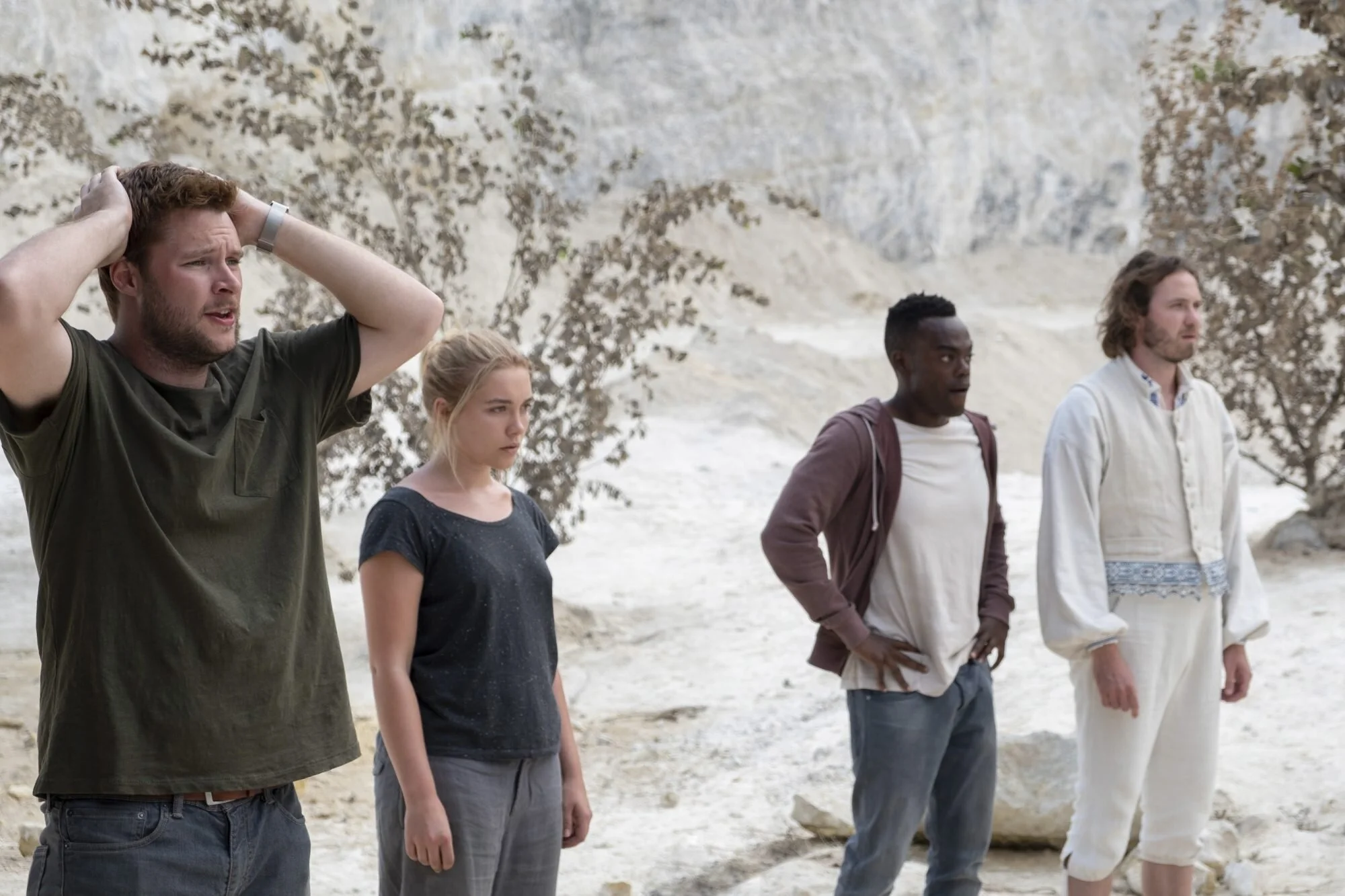Metahorror Comedy Wrap-Up
A list of some of our favorite metahorror classics and modern gems. Not an exhaustive list, of course, but a good starting point if you need more metahorror in your life.
Imminent & Spontaneous Personal Doom
Spontaneous combines gallows humor and whiplashing tonal shifts to pile on emotional intensity, capturing two-plus decades of ongoing trauma on two generations of children the United States has failed to protect from mass shootings due to its own systemic incompetence and lack of political will. The film leaves you numb, reflecting the effect of personal and national trauma, as well as the necessity of overcoming it.
Missing the Messy Bits: A Comparison of Fright Nights
Craig Gillespie’s 2011 remake of Tom Holland’s 1985 meta-horror classic streamline's characters, cuts out the creepy sexualized treatment of Amy, and favors a more action-oriented approach over Holland’s self-aware campiness and references to horror movies of yore. But in buffing out the original’s messy strangeness, the remake loses some of the magic that made the original a beloved gem.
Stop Me if You've Heard This One
Rallying against many clichés that seemed built into the slasher genre at the time of its making, Cabin in the Woods was not only a rebuke of what the horror genre had become, but also a celebration of what it could be.
More than a quippy teen slasher brimming with meta-humor, Cabin is a teen slasher about making teen slashers. Leaning into filmmaking allegory and industry clichés, the film argues that the recycling of old ideas from the masters was unsustainable, that we needed to burn down the work of the Ancient Ones so that something new could rise from the ashes.
Catastrophic Plan: The Legacy of Billy Loomis in Scream
Let’s talk about the 1996 meta-horror mega-hit film Scream and how it’s meaning has changed post #metoo, now offering a critique of domineering misogyny and gaslighting, reflected in the film’s use of Nick Cave and the Bad Seeds’ creepy, mysterious, broody, and catchy-as-hell “Red Right Hand.”
More Great Folk Horror & Some Definitions
We wanted to bring you a list of good Pagan horror we didn’t get to talk about last month. But there was a problem. In our search for Pagan horror, we came across a lot of Satanic cults and witches, as well as some stories and creatures from old folktales, but relatively little in the way of what we would call Pagan horror. So instead, we’re going to tell you about some other great folk horror we came across.
Häxan & the Wrong Version of a Great Film
Häxan has left behind a unique legacy, and lots of folks have written about it as an early film that blurred the lines between fact and fiction, reality and fantasy. It is also an essay, which is key to its integrity and artfulness. The Wrong Version of the film, recut, renamed a name we shall not name, and punched up with an out-of-place jazz score, scraps all that in favor of what feels like a deeply insensitive, drugged-out History Channel documentary.
Lost My Shape: Death & Rebirth of Identity in Midsommar
In the wake of overwhelming tragedy and faced with the uncertainty of life beyond their four-year relationship, the main characters of director Ari Astor’s instant classic Midsommar (2017) reluctantly depart for the sunny hills of Hälsingland—a foreign town that serves the couple as a kind of limbo, testing each to see who they will become in the aftermath of a clearly failing relationship. Dani emerges with newfound purpose and identity, but her boyfriend Christian, loses himself at every turn, burning every social bridge that formed his identity until flames consume the little bit that’s left.
Some Irish Horror We've Watched Recently
Happy Everyone’s Irish Day! Here are a few Irish horror movies we’ve watched recently. All the movies on this list were made by Irish filmmakers, all are set in Ireland, and all play off of fears that, in our American estimations (with some Irish heritage, which pretty much makes us experts, right?…), seem particularly Irish.
Schrödinger’s Kill List
Ben Wheatley’s Kill List (2011) is an odd film, at once ultra-violent and even-keeled, confused and focused, quiet and, thanks to expert sound design, deafening. While detail and precision give movies like The Wicker Man (1973) and Häxan (1923) their own special brand of disturbing, in Kill List, it’s the lack of detail, the haziness, the things you can’t figure out that make this film so bizarre and unsettling.
The False Martyr & The Wicker Man
A lot’s been said about the contents of the various cuts of The Wicker Man and about the film’s religious commentary. We’re interested in protagonist Sgt. Neil Howie’s depiction as a false martyr—false because, Sgt. Howie is not, in fact, the martyr Lord Summerisle proclaims him to be.













